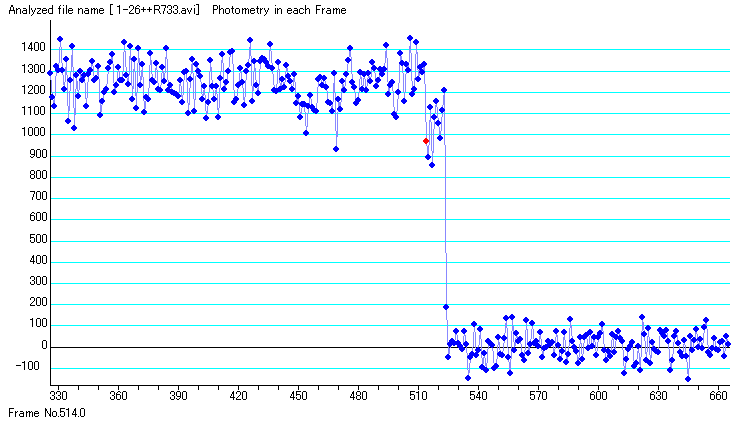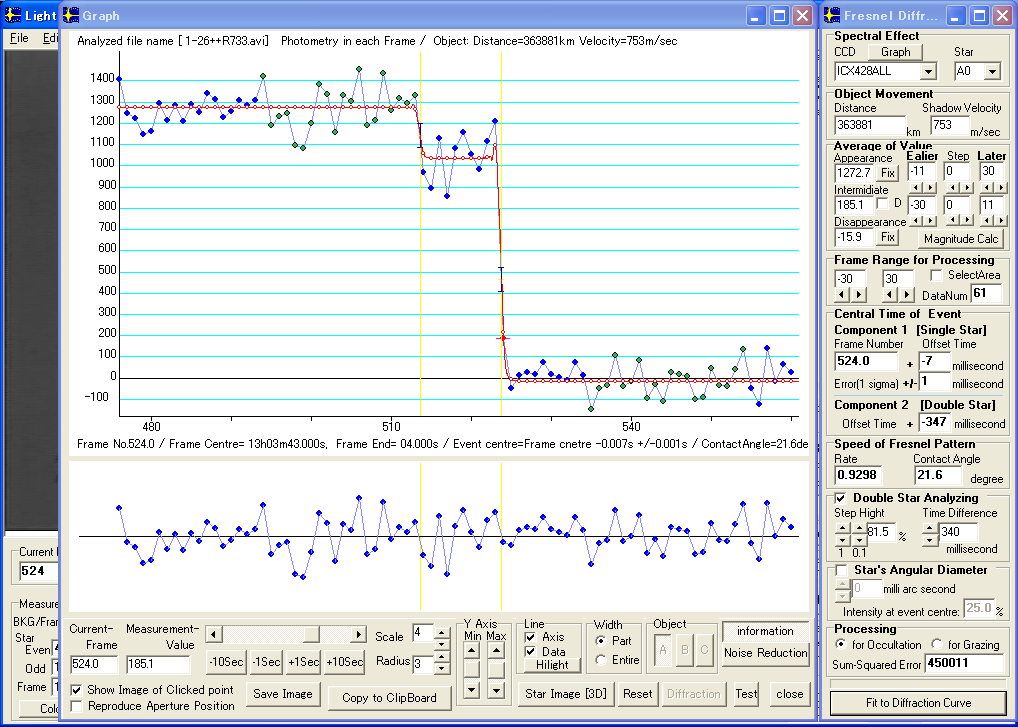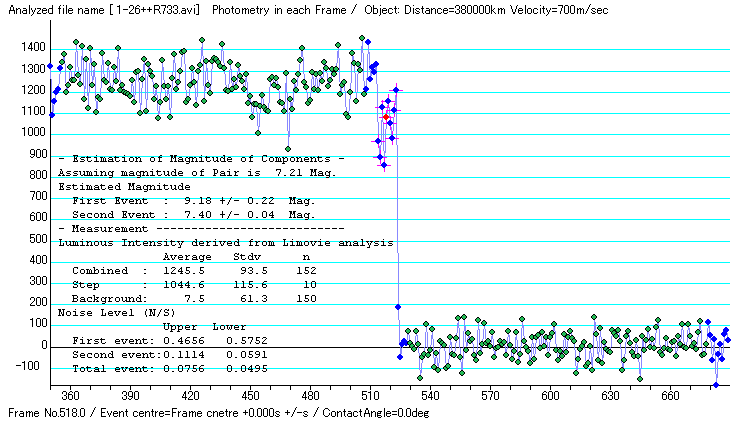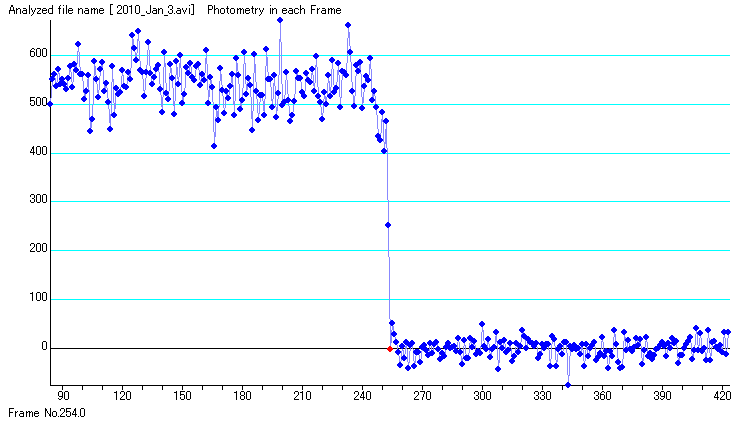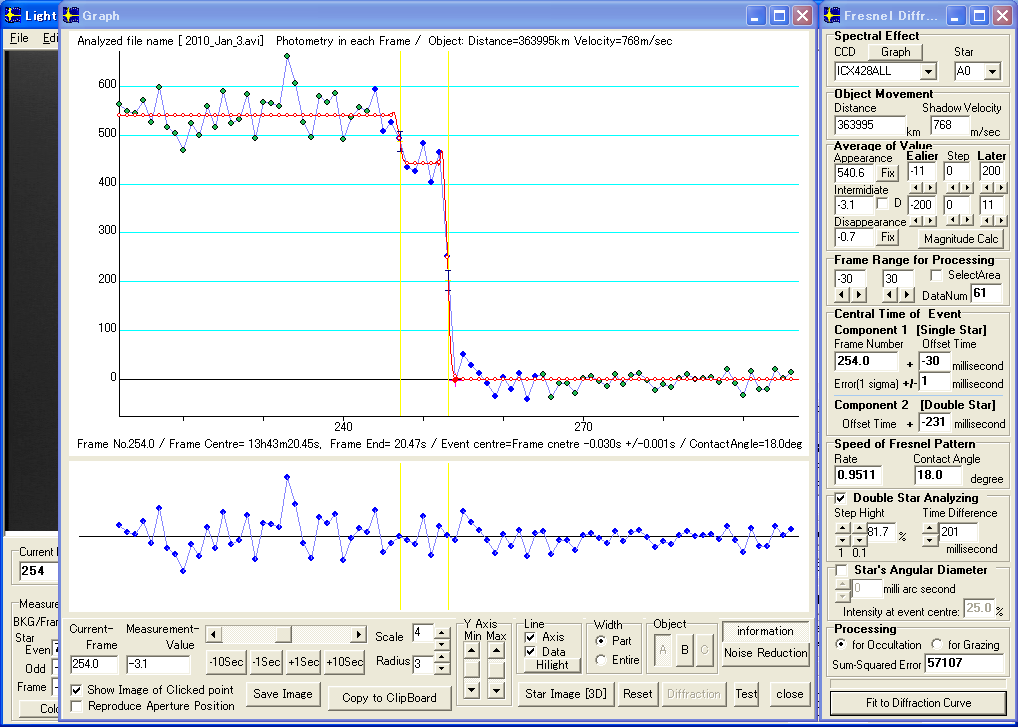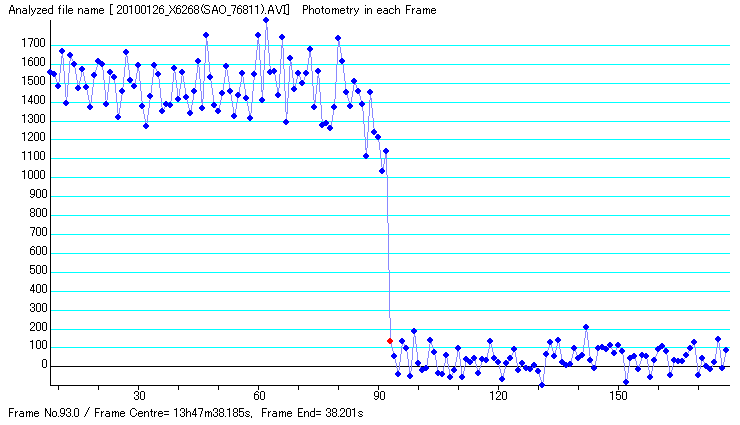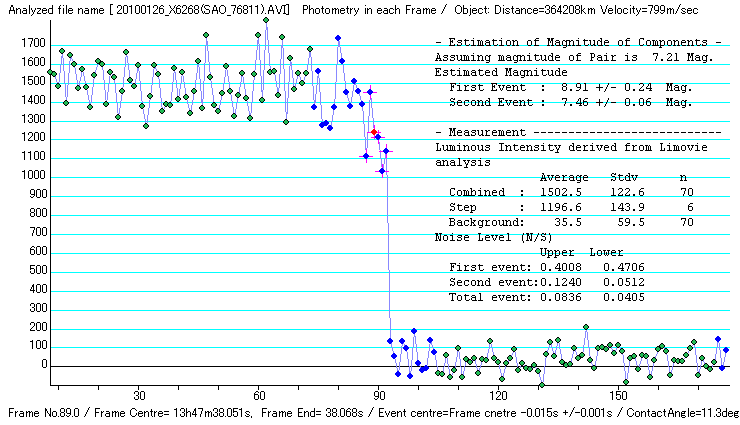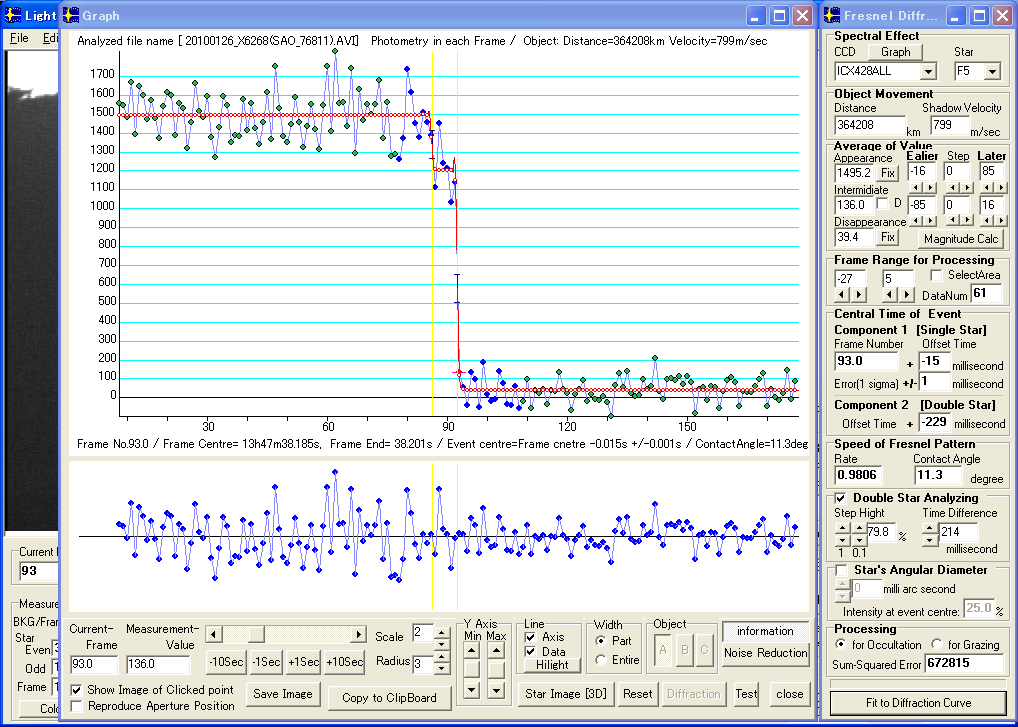Dec. 11, 2010
Kazuhisa Miyashita
| Separation | Position angle | Otained from occultation | 0.22+/-0.02" | 348.5+/-2.4 degrees | 2005.8690 USNO speckle | 0.241" | 341.3 degrees |
|
Catalogue details XZ 6268 = SAO 76811 = ZC 733 RA = 4 53 36.4655 PM = 0.00205s Dec = 25 21 58.741 PM = -0.0193" Mv = 7.21, Mb = 0.00, Mr = 0.00 Spectrum A0 Dia: .0000" [Estimated] Star is component A in the following system Name Cmpt Yr1 Yr2: PA1 PA2 : Sep1 Sep2 : Mag1 Mag2: #1 #2 mean CHR 127 AB 1987 2007: 110.0 345.0: 0.100 0.100: 7.42 9.12: R 733 ------ A 1843 AC 1908 2007: 334.0 349.0: 0.200 0.200: 7.30 10.00: R 733 ------ WDS Discoverer codes A Aitken, R.G. CHR Center for High Ang. Res. Astronomy ----------------------------------------------------------------------------------------------------- Interferometric catalogue entries 045336.45+252158.9 ADS 3501 CHR 127AB HD 31033 HIP 22747 04536+2522 Date PA Sep M1 M2 1987.7573 109.9 . 0.075 . . . . . 549 22 3.8 1 McA1989 Sch 1988.6609 115.7 . 0.093 . . . . . 549 22 3.8 1 McA1990 Sch 1989.2292 119.0 . 0.105 . . . . . 549 22 3.8 1 McA1990 Sch 1991.2201 V273. . 0.0484 . . . 1.5 . 550 89 1 Osb1996 Occ 1991.25 308. . 0.139 . 7.42 . 9.12 . 550 0.3 1 HIP1997a Thp 1991.9022 135.8 . 0.148 . . . . . 549 22 3.8 1 Hrt1994 Sch 1993.8420 140.8 2. 0.174 0.005 . . . . 600 6.0 1 Bag1994 Spe 1994.8992 325. 4. 0.178 0.008 . . . . 600 200 1.0 1 Bag1999a Spe 1995.7711 147.2 . 0.196 . . . . . 549 22 2.5 1 Hrt1997 Sch 1996.8716 147.6 . 0.199 . . . . . 549 22 2.5 1 Hrt2000a Sch 2000.8732 336.3 0.6 0.229 0.002 . . 1.75 0.02 545 30 6.0 1 Bag2006b Spe 2005.8690 341.3 . 0.241 . . . . . 550 24 3.8 1 Msn2009 Sus 045336.45+252158.9 ADS 3501 A 1843AC HD 31033 HIP 22747 04536+2522 Date PA Sep M1 M2 1987.7573 299.8 . 0.519 . . . . . 549 22 3.8 1 McA1989 Sch 1991.25 . . . . 7.418 0.102 9.120 0.489 511 222 0.3 1 HIP1997f Thp |
|---|

|
Assuming magnitude of Pair is 7.21 Mag. Observer Ishida Karasaki Kenmotsu Catalogue Brighter star 7.43 +/- 0.04 7.46 +/- 0.06 7.40 +/- 0.04 7.42 Fainter star 9.07 +/- 0.18 8.91 +/- 0.24 9.18 +/- 0.22 9.12 |
|---|
